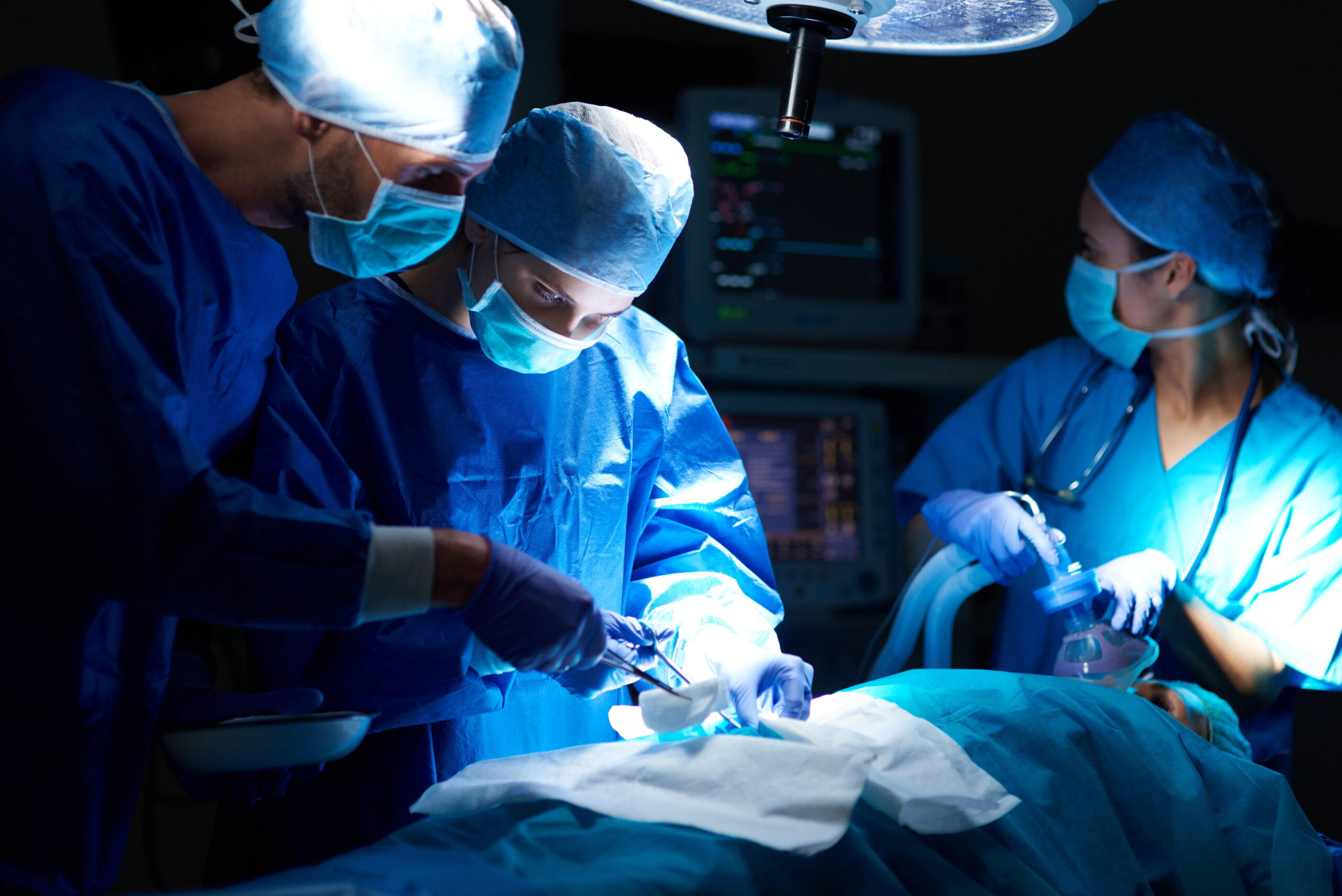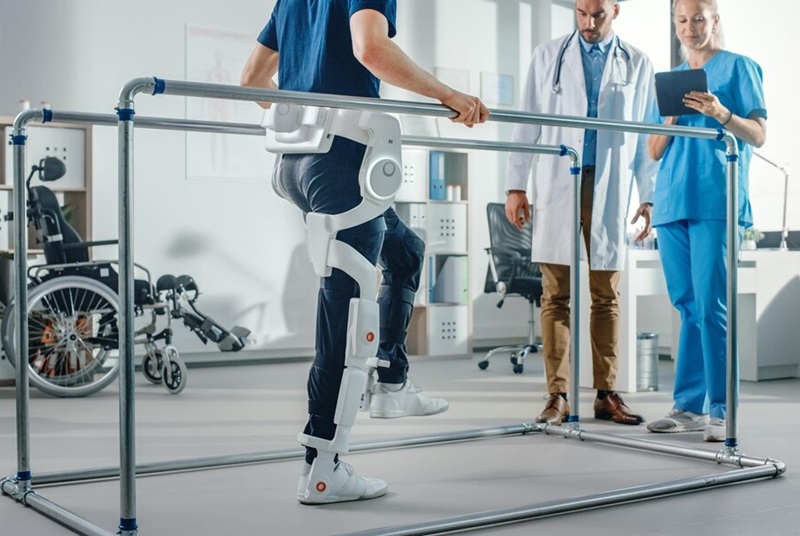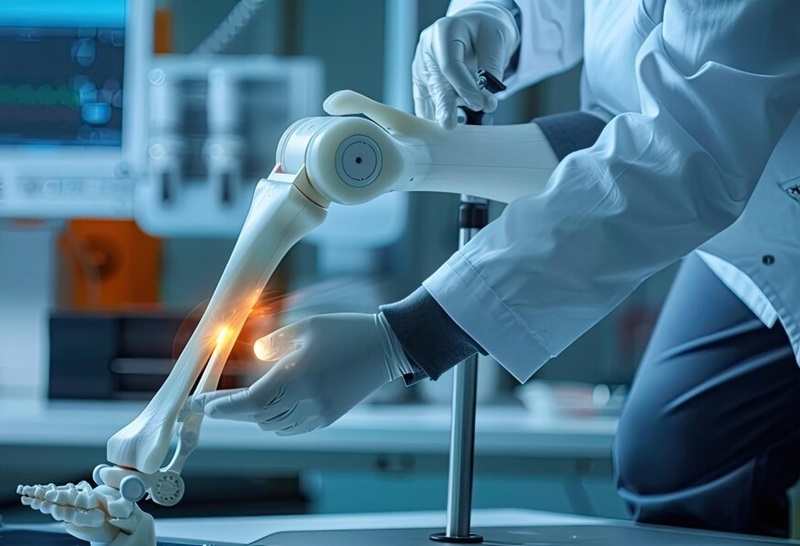Its widespread recognition and adoption across various medical disciplines underscore the profound impact it has made on the way complex procedures are approached and executed. As we delve into the capabilities and applications of robotic knee replacement surgery in Mumbai, a new era unfolds—one characterized by enhanced accuracy, minimally invasive techniques, and a reimagined landscape of possibilities in the realm of surgical interventions.
Evolution of Robotic Knee Replacement Surgery In Mumbai Surgery
The inception of the best hospital for knee replacement surgery in Thane can be traced back to the turn of the 21st century when the da Vinci Surgical System, developed by Intuitive Surgical, received FDA approval in 2000. This marked a pivotal moment in medical history, introducing a best hospital for knee replacement surgery in Thane platform designed to assist surgeons in performing intricate procedures with unparalleled precision. Since its introduction, the da Vinci system has undergone continuous refinement, becoming a staple in operating rooms globally.

Key Components of Robotic Surgery
The da Vinci Surgical System, a prominent example of robotic surgery technology, comprises several key components. At its core is a console where the surgeon sits, equipped with controls that mimic hand movements. Connected to the console is a robotic cart housing four robotic arms, each with specialized surgical instruments. These arms are controlled by the surgeon and carry out precise movements dictated by the surgeon’s hand motions. The system also incorporates a high-definition 3D vision system, providing surgeons with a detailed and magnified view of the surgical site.
Advantages of Robotic Surgery
The use of robotic technology in surgical procedures represents a revolutionary development in the field of modern medicine, bringing in a new era of accuracy and productivity. Robotic surgery, sometimes referred to as robot-assisted surgery, is a paradigm-shifting procedure that seamlessly combines robotic systems’ capabilities with the knowledge and skills of highly competent surgeons. This novel strategy changes the face of surgery by providing a host of benefits that cut across different medical professions. Robotic surgery offers many benefits that are driving the medical sector toward previously unheard-of levels of accuracy and patient care. These benefits include improved precision, less intrusive procedures, and faster recovery times.
Precision and Accuracy
Robotic surgery stands out for its unmatched precision and accuracy. The robotic arms can execute controlled movements with a level of precision that surpasses what is humanly possible. This advantage is particularly crucial in delicate procedures where minute movements can have a significant impact.
Minimally Invasive Procedures
One of the defining features of the best hospital for knee replacement surgery in Thane is its emphasis on minimally invasive procedures. Unlike traditional open surgeries that require larger incisions, robotic surgery involves small incisions through which the robotic arms and instruments are introduced. This minimizes trauma to the patient’s body, resulting in faster recovery times, reduced pain, and decreased risk of infection.
Enhanced 3D Visualization
The incorporation of advanced 3D visualization systems in robotic surgery provides surgeons with an unprecedented view of the surgical field. The three-dimensional depth perception enhances the surgeon’s ability to navigate complex anatomical structures, contributing to better decision-making during the procedure.
Reduced Blood Loss
Precise movements and cauterization capabilities of robotic instruments contribute to minimize blood loss during surgery. This is a critical factor in procedures where excessive bleeding could pose risks to the patient’s well-being. Reducing blood loss not only ensures patient safety but also facilitates a smoother recovery process.
Quicker Recovery Time
Patients undergoing robotic surgery often experience shorter hospital stays and quicker recovery times compared to traditional open surgery. The minimally invasive nature of the procedures, coupled with reduced postoperative pain, allows patients to resume normal activities sooner, contributing to an overall improved patient experience.
Versatility Across Specialties
Initially employed in urologic and gynecologic procedures, robotic surgery has expanded its reach across various medical specialties. Surgeons now utilize robotic systems in general surgery, cardiothoracic surgery, colorectal surgery, and head and neck surgery. The versatility of robotic platforms has broadened their application in different surgical domains.
Improved Ergonomics for Surgeons
Robotic surgery consoles are designed with the ergonomics of surgeons in mind. The seated position at the console, coupled with controls that replicate hand movements, reduces physical strain and fatigue during lengthy procedures. Surgeons can operate with precision while maintaining optimal comfort.
Challenges and Future Directions
While robotic surgery has undeniably transformed the field of surgery, it is not without challenges. The initial cost of acquiring the best hospital for knee replacement surgery in Thane systems and ongoing maintenance expenses can present financial barriers for some healthcare institutions. Additionally, the learning curve for surgeons transitioning to robotic-assisted procedures requires dedicated training programs.
Looking ahead, ongoing advancements in robotic technology aim to address these challenges and further refine the capabilities of robotic surgery. The integration of artificial intelligence, haptic feedback systems, and continued miniaturization of robotic components are anticipated trends that will shape the future of robotic-assisted surgery.
Robotic surgery has emerged as a cornerstone in the evolution of surgical practices, offering a synergy of human expertise and technological precision. Its advantages, ranging from unparalleled precision to minimally invasive procedures, have positioned robotic surgery as a transformative force in healthcare. As technology continues to progress, the accessibility and effectiveness of robotic systems are poised to increase, marking a continued commitment to advancing patient care. The journey of robotic surgery reflects the ongoing narrative of innovation in medicine, where human ingenuity and technological prowess converge for the betterment of healthcare outcomes.
Conclusion
In conclusion, the development of the best hospital for knee replacement surgery in Thane has fundamentally changed the field of modern surgery and represents a paradigm shift in the way difficult treatments are handled and carried out. The surgical sector has entered a new era of possibilities due to robotic knee replacement surgery in Mumbai exceptional precision, minimally invasive nature, and improved visibility. The many benefits of robotic surgery—from quicker recovery periods to more precise surgery.
Underline its revolutionary influence on patient care as the field’s technological frontiers continue to grow. Even while expenses and difficulties are still factors, robotic technology’s ongoing advancements indicate that the future is even more promising and reinforce its crucial role in determining the direction of surgical innovation. Robotic surgery stands not only as a testament to human ingenuity but as a beacon illuminating the path toward a more advanced and patient-centric era in medical practice.
FAQs
Is robotic surgery considered minimally invasive?
Yes, robotic surgery is often considered minimally invasive. The use of small incisions, coupled with the precision of robotic instruments, reduces trauma to surrounding tissues. Patients may experience less pain, faster recovery times, and smaller scars compared to traditional open surgery.
What are the advantages of robotic surgery for patients?
Advantages include reduced blood loss, shorter hospital stays, quicker recovery times, and smaller incisions. Patients may also experience less postoperative pain and a lower risk of complications.
Are all surgeons trained to perform robotic surgery?
To use the robotic system, surgeons need to complete specific training. Training programs ensure that surgeons are proficient in using the technology and can effectively translate their skills into the robotic-assisted surgical environment.
Are there any limitations or risks associated with robotic surgery?
While robotic surgery offers numerous benefits, it is not suitable for all procedures, and there may be specific limitations. Risks can include technical malfunctions, the need for experienced surgeons, and, in rare cases, injury to surrounding tissues. It’s crucial to discuss potential risks with the surgical team.










